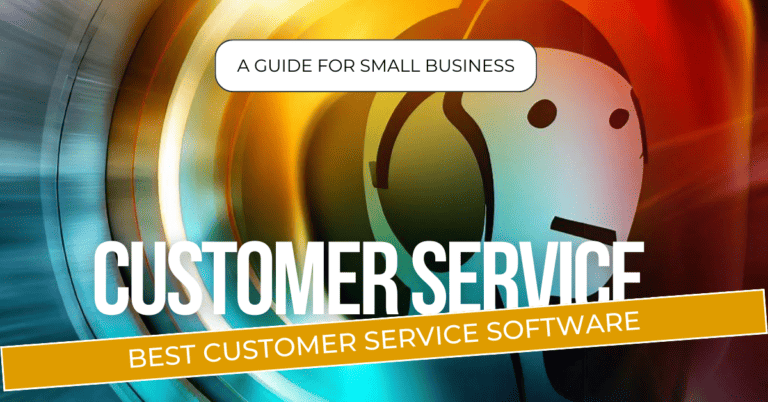Enhancing Business Success with Customer Feedback Tools
Implementing customer feedback tools in your business can seem like a daunting task, especially when you’re not familiar with the landscape of these digital platforms.
Browsing through numerous online forums and articles, you might come across people expressing how challenging it is to choose the right tool without prior experience or knowledge.
“You can’t select an effective tool without understanding its features and potential benefits.”
This simply isn’t true. There are plenty of businesses out there achieving significant growth by leveraging customer feedback tools effectively even with minimal initial know-how.
The world of customer service and satisfaction is evolving at a rapid pace due to technological advancements. New startups are emerging every day offering innovative solutions that change the way we gather, analyze, and utilize customer feedback for business improvement.
The need for efficient customer feedback management is real
Table of Contents:
- The Power of Customer Feedback in Business Growth
- Unleashing the Potential of Customer Feedback Tools
- Spotlight on Top Customer Feedback Tools
- Integrating Customer Feedback Tools into Your Business Workflow
- Maximizing Response Rates Through Effective Survey Design
- Analyzing Customer Feedback – Turning Data into Actionable Insights
- Leveraging Customer Feedback for Product Development
- FAQs in Relation to Customer Feedback Tools
- Conclusion
The Power of Customer Feedback in Business Growth
Uncovering the secrets behind your customers’ behavior is key to unlocking business growth. The tool that can help you do this? It’s none other than customer feedback.
Customer feedback tools, when properly deployed, not only provide a treasure trove of valuable insights but also streamline data collection and analysis processes by delivering real-time information for decision-making. These nifty resources are instrumental in decoding patterns within customer behavior, empowering businesses to customize their offerings accordingly.
Tailoring Products and Services Through Constructive Criticism
A critical advantage offered by gathering customer feedback lies in its ability to highlight areas where your product or service may be lacking. Proactively addressing these concerns results in improved products/services, which subsequently leads to increased satisfaction among existing customers while simultaneously drawing new ones into the fold.
This continuous cycle – collecting feedback, refining based on it, then seeking additional input – creates an environment conducive to sustainable business growth. In fact, there exists a direct correlation between enhanced offerings driven by constructive criticism and heightened sales performance; something no growing enterprise should ignore.
Nurturing Brand Loyalty with Effective Communication Channels
An often-overlooked facet integral to cultivating high levels of customer satisfaction is communication effectiveness. When customers feel they have been heard through dedicated channels like a well-implemented feedback tool, they develop trust towards the brand, fostering loyalty over time.
In turn, satisfied clients become organic promoters advocating your brand within their networks – providing invaluable publicity that contributes significantly to scaling up operations.
With an understanding now established regarding how vital capturing effective client responses truly is, let us delve deeper into various types of tools available designed specifically for optimizing this process.
Customer feedback tools are a goldmine for business growth, offering real-time insights to tailor offerings and improve customer satisfaction. They foster communication effectiveness, boosting brand loyalty and turning satisfied clients into organic promoters. So dig deep with these tools – they’re your ticket to scaling up operations.
Unleashing the Potential of Customer Feedback Tools
The customer feedback landscape is a vast expanse, offering businesses an array of tools to extract insights from their customers. These can be broadly classified into survey tools, review platforms, and visual feedback systems.
Digging Deeper Into Features of a Robust Feedback Tool
A cornerstone in this arsenal is survey tools, which collect quantitative data through structured questionnaires. They come with customization options enabling businesses to tailor surveys as per specific needs. An easy-to-use interface becomes paramount here for creating these surveys seamlessly.
In contrast, review tools focus on qualitative insights by allowing free expression about products or services from users themselves. Key features often include advanced analytics dashboards that help decode unstructured data effectively.
Visual feedback mechanisms record user interactions on live websites, providing an understanding beyond mere numbers or text-based reviews. This type of tool captures real-time information such as mouse movements, clicks, and scrolls, among others – all valuable inputs about how users interact with your website. All three types have unique strengths but share common characteristics too – simplicity being one among them. No matter if it’s designing a form for capturing responses or setting up a dashboard for analysis, ease-of-use should never take a backseat when choosing between different customer-feedback solutions. Your business deserves nothing less than optimal.
Picking the Right Tool to Meet Your Business Goals
Your choice would largely depend upon what you aim to achieve via your efforts around collecting feedback, along with other factors like budget constraints and technical capabilities within your team.
The market today offers various popular choices catering to diverse requirements, ranging from simple forms creation functionality right up to sophisticated sentiment analysis algorithms capable of predicting future trends based on past responses received via these platforms.
Stay tuned. We’ll delve deeper into some top-rated customer-feedback platforms next time around.
Customer feedback tools are a treasure trove of insights, with survey tools for quantitative data, review platforms for qualitative analysis and visual systems capturing real-time user interactions. Choosing the right tool hinges on your business goals, budget constraints and technical prowess.
Spotlight on Top Customer Feedback Tools
The world of customer feedback tools is vast, with each platform offering unique features to cater to different business needs. One standout tool is Typeform, renowned for its user-friendly survey design panel that allows businesses to effortlessly create engaging surveys.
Continuing our exploration,
We come across UserReport. It takes a slightly different approach by focusing primarily on net promoter scores (NPS). This provides companies with insights into their customers’ loyalty and overall satisfaction levels.
Understanding the Features of a Good Feedback Tool
In contrast, we have Canny’s feedback tool. It offers a range of features designed to enhance the feedback collection process. With Canny, businesses can gather and prioritize customer feedback, track feature requests, and effectively engage with their customers.
Integrating Customer Feedback Tools into Your Business Workflow
The time has come to integrate customer feedback tools into your existing workflow. Integrating these platforms into your business processes can be hugely advantageous, helping to optimize productivity and streamline operations.
This is where native integrations come into play.
As Benjamin Franklin wisely stated, “An ounce of prevention is worth a pound of cure.”
In this context, planning ahead means selecting a tool that offers seamless integration with popular software environments such as Google Analytics or Microsoft Teams. This not only boosts team collaboration but also enables real-time alerts about collected responses.
Digging Deeper Into Native Integrations
A closer look at native integrations reveals their immense value in automatic data sharing between different systems.
You no longer need to manually input information from one platform to another – saving you time while reducing potential errors.
An integrated Google Analytics setup provides insights on how customers interact with your website or app by tracking user behavior metrics like session duration, bounce rate, etc., giving you an edge over competitors who are still guessing what works best for them.
If Microsoft Teams happens to be part of your toolkit, integrating it will create efficient communication channels where all gathered customer feedback gets shared instantly among team members via real-time alerts, ensuring everyone stays updated without having multiple platforms open simultaneously.
Making Integration Work For You.
Before we dive deeper into maximizing response rates through effective survey design (our next topic), keep in mind how crucial those surveys themselves – whether pre-built templates or custom ones created using online form builders – need proper distribution channels, including email surveys or website widgets, to effectively reach more respondents.
Maximizing Response Rates Through Effective Survey Design
After crafting your business strategy and understanding customer behavior and preferences, you’re now ready to maximize response rates through effective survey design.
The moment has arrived to delve deeply into the realm of surveys.
An old saying goes, “A stitch in time saves nine.” The same applies when it comes to designing an effective survey – planning ahead can save you from poor response rates later on.
The more engaging your questionnaire is, the better chances you have of getting valuable feedback that will help shape product development strategies based on actual user needs and preferences, leading to improved products over time. Here are some tips:
Utilize Pre-Built Survey Templates
Dive right into pre-built templates: These professionally designed tools cover all essential areas without missing out on any critical information, making them a quick and efficient way to create surveys. This not only saves your precious time but also provides a strong starting point for data collection efforts.
To make respondents feel valued and increase their willingness to participate, personalize these pre-built templates as per specific needs.
Create Custom Surveys Using an Online Form Builder
If customization is what you seek, then creating custom surveys using an online form builder should be considered. With this tool at hand, total freedom prevails over question types, layout options, color schemes, and everything that defines how engaging or interactive your survey will be.
Tailoring unique surveys specifically targeting your audience ensures relevancy, thus significantly increasing response rates among participants.
Multilingual Surveys – Reaching Global Audiences
In today’s globalized era, businesses operate across borders, hence reaching customers in their native language becomes vital. Multilingual surveys offer an advantage by breaking down language barriers, thereby enhancing decision-making processes with broader perspectives received via such feedback.
As we have explored ways to maximize our response rates, let us move forward, delving deeper and turning collected feedback into actionable insights that drive better business decisions.
Dive headfirst into the world of surveys to boost response rates. Use pre-built templates for efficiency, customize with an online form builder for uniqueness, and consider multilingual options to reach global audiences. Remember: a well-planned survey today saves poor responses tomorrow.
Analyzing Customer Feedback – Turning Data into Actionable Insights
Upon gathering customer feedback, the subsequent crucial step is to analyze this information. A key player in deciphering raw data and converting it into actionable insights is advanced analytics software.
NPS Surveys – Measuring Customer Loyalty
The Net Promoter Score (NPS) surveys are a fundamental tool for measuring customer loyalty. The way NPS survey operates involves asking customers how likely they would recommend your business to others on a scale of 0-10. Customers who respond with scores between 9 or 10 fall under ‘Promoters’, while those giving scores from 0 through 6 become known as ‘Detractors’. By subtracting the percentage of Detractors from that of Promoters, you get the NPS score.
This potent instrument not only gauges overall satisfaction levels among customers but also presents an opportunity for businesses to identify areas needing improvement based on direct input from their clientele. For instance, if certain products consistently receive low NPS ratings, companies can delve deeper into these responses and uncover potential issues affecting user experience.
In addition, Tableau or Microsoft Power BI, which are examples of advanced analytics software, allow organizations better visualization capabilities when analyzing feedback. This enables them to spot trends over time and understand patterns within large datasets, thus making informed decisions about product enhancements or changes in service delivery methods.
Sentiment Analysis Techniques – Understanding Emotional Tones Behind Text-Based Responses
Sentiment analysis techniques further enhance value by enabling firms to interpret emotional tones behind text-based responses, which might be overlooked during manual review processes. By effectively utilizing such tools when analyzing customer feedback, meaningful insights that drive strategic decision-making across various facets of business operations can be derived.
As we proceed to our next section, we will explore more deeply how this valuable gathered feedback plays a pivotal role in shaping product development strategies leading towards improved offerings over time.
Customer feedback tools, like NPS surveys and advanced analytics software, are essential for turning raw data into actionable insights. They not only measure customer loyalty but also help identify areas of improvement based on direct input from customers. Additionally, sentiment analysis techniques enable businesses to understand the emotional tones behind text-based responses, driving strategic decision-making across various facets of operations.
Leveraging Customer Feedback for Product Development
Imagine you’ve gathered a wealth of customer feedback. Utilizing the customer feedback, it’s time to create a product development strategy that will bring the data to life.
This is where the real enchantment starts.
The famous quote by Bill Gates comes to mind: “We all need people who will give us feedback. That’s how we improve.”
Incorporating customer opinions directly into your product design process not only improves existing offerings but also fosters trust among users as they see their input being valued and acted upon.
Finding Value with Feedback Tools
Feedback tools, with their varied features like surveys or open-ended questions, offer an effective way of collecting user insights about products or services.
By analyzing these responses using advanced analytics software available within most modern tools, businesses can identify areas needing improvement, thereby driving innovation based on actual user needs.
Making Your Product Strategy User-Centric
To truly harness the power of customer input, it must be systematically integrated into overall product strategies.
The actionable insights derived from analyzed data should then guide changes made during subsequent stages – refining current features or introducing new ones entirely based on identified demands through collected responses.
Cultivating Continuous Improvement Through Regular Input Collection
Beyond the initial stages, the role played by continuous collection and evaluation cannot be understated.
Periodic engagement via post-purchase reviews, surveys, etc., ensures consistent insight generation feeding back directly into future developments, thus maintaining relevance and market competitiveness over time.
Remember, Bill Gates. So take every piece of criticism constructively, and let it drive better outcomes in terms of improved products and services, leading ultimately towards enhanced business growth.
FAQs in Relation to Customer Feedback Tools
What are customer feedback tools?
Customer feedback tools are digital platforms that businesses use to collect, analyze, and respond to customer opinions about their products or services.
What CRM tools are used for customer feedback?
CRM tools like Salesforce, HubSpot, and Zoho have built-in features for collecting and managing customer feedback as part of the overall relationship management process.
What are 5 methods of obtaining feedback from customers?
The five common methods include online surveys, social media monitoring, focus groups, direct interviews or phone calls, and user activity analysis on websites or apps.
Which tool can be used to generate user feedback?
Typeform is a popular tool that generates user-friendly surveys for gathering detailed user responses. Other options include UserReport and Canny.
Conclusion
Customer feedback tools are the secret sauce to business growth.
They offer a wealth of insights into customer behavior and satisfaction levels, helping you refine your products or services.
Different types of these tools exist, each with unique features designed for specific data collection needs.
You’ve learned about top-rated platforms like Typeform and UserReport that focus on intuitive survey design and net promoter scores respectively.
We also discussed how integrating these tools into your existing workflow can boost efficiency significantly.
The importance of effective survey design in maximizing response rates was highlighted too. Remember, multilingual surveys can help reach global audiences effectively!
Analyzing this collected data is crucial in deriving actionable insights for business improvement.
This website has more resources to guide you through leveraging customer feedback for product development based on actual user needs.
Ready to transform your business? Dive deeper into my 35 years’ experience in customer service innovation.




